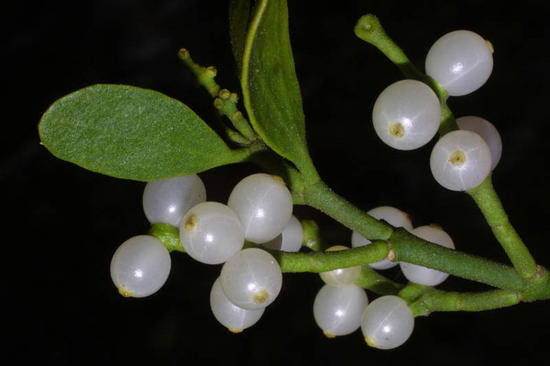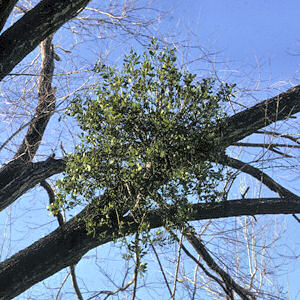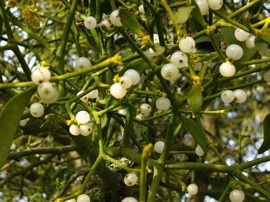
Mistletoe is the common name for a group of hemi-parasitic plants in the order Santalales that grow attached to and within the branches of a tree or shrub. Mistletoe is commonly used as a Christmas decoration, though such use was rarely alluded to until the 18th century. According to custom, the mistletoe must not touch the ground between its cutting and its removal as the last of Christmas greens at Candlemas; it may remain hanging through the year, often to preserve the house from lightning or fire, until it was replaced the following Christmas Eve. According to Christmas custom, any two people who meet under a hanging of mistletoe are obliged to kiss. But we might have to kiss mistletoe a goodbye as these species are facing extinction.
The European mistletoe in UK faces the problem for its survival as the apple orchards, on which the plant has depended for long, are being replaced by the farms in countryside. Since 1950s England has lost at least 60% of its traditional orchards, which supply apples for alcoholic cider and juices. Some areas are down to just 10 percent of their old orchards, according to the non-profit conservation charity National Trust.
Hundreds of apple orchard are currently lying abandoned as modern apple farming techniques take over according to a report from The Independent.  The mistletoe plant is overrun by the deserted trees, which will eventually kill the them and leave the parasitic plants with nothing to grow on. and if the orchard are being maintained, then the mistletoe would be cut to protect the apple tree, and of course sold to earn some money.
The mistletoe plant is overrun by the deserted trees, which will eventually kill the them and leave the parasitic plants with nothing to grow on. and if the orchard are being maintained, then the mistletoe would be cut to protect the apple tree, and of course sold to earn some money.
Industrial apple orchards do not provide a suitable habitat for the plant, says mistletoe expert Jonathan Briggs, who runs a Web site called The Mistletoe Pages. “The main problem with modern commercial apple orchards is that they’re mostly machine-harvestable ‘bush orchards’ with very closely planted rows of small trees on a growth-limiting rootstock.” Not only are the trees too small to support mistletoe’s parasitic growth, “these orchards are very intensively managed, and any new mistletoe growths would be readily spotted and removed, as the grower is only interested in maximizing their apple crop—and a mistletoe growth would significantly affect the yield of these small trees,” he says.
Despite the threat, Briggs says the holiday parasite is actually doing well—for now. In a separate interview, he told the Guardian, “Those older orchards are probably yielding more mistletoe than they used to because it’s not being controlled. But because the mistletoe is not being controlled, fast forward 10 or 20 years and the orchards won’t be there. The mistletoe will accelerate the trees’ deaths, and it seems inevitable that we will have a shortage of mistletoe in 10 or 20 years.
The National trust has launched a campaign via the orchard network to boost up the growth of mistletoe plant. Several British birds snd insects that live on the plant for their food will also be enlisted as the species nearing extinction. Last year, the National Trust warned that the mistletoe marble moth could now only be found on 14 sites and called on Brits to drink more cider so traditional orchards could thrive and provide good habitat for the endangered insects.
European mistletoe grows throughout Europe and in parts of Asia. The mistletoe that grows in North America is of a different but related species.

Via: scientificamerican
Mistletoe and other species face extinction as U.K. apple orchards disappear




